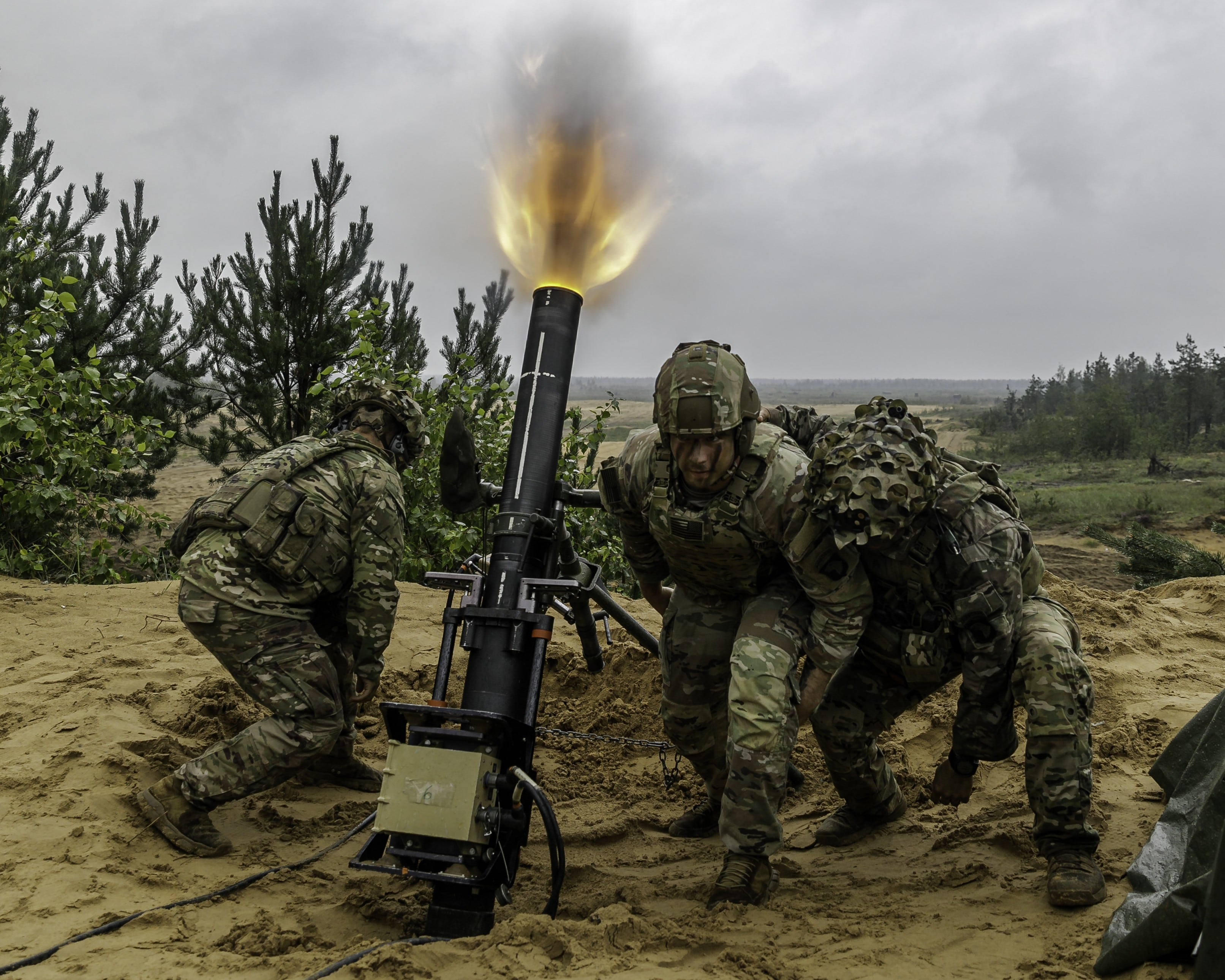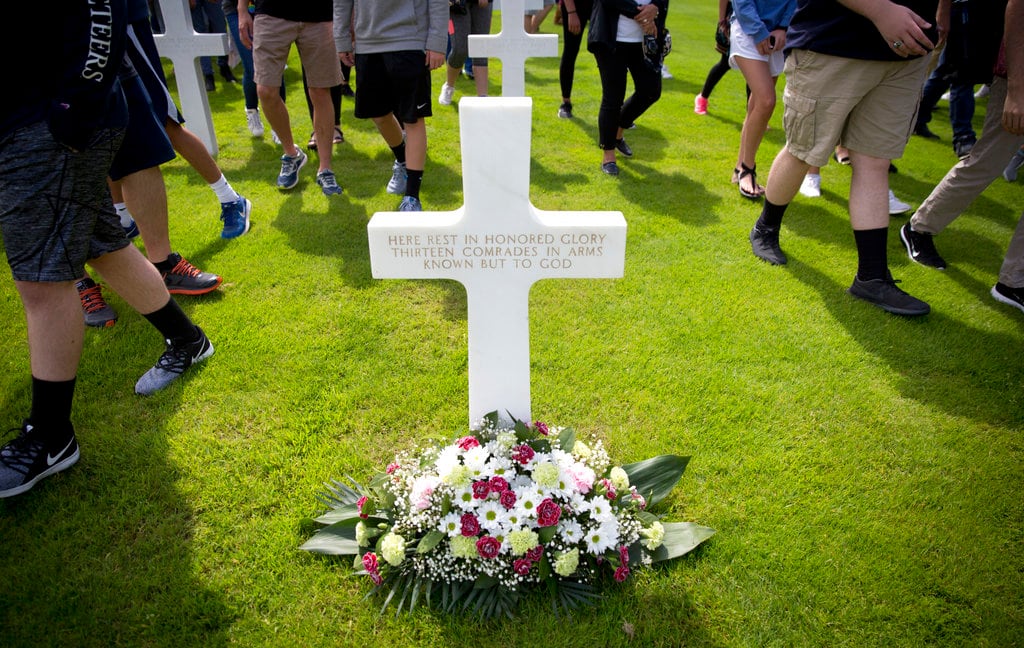The U.S. Army’s $185.9 billion fiscal year 2025 budget request increased by just $400 million over the previous year’s request, which would leave the armed service to work within the confines of a almost flat budget while having to address rising military personnel costs, recruiting struggles and wars in Ukraine and Gaza.
The service is asking for $175.4 billion in its base budget and another $10.5 billion to pay for overseas operations.
The FY25 budget levels also presume the passage of supplemental funding by Congress to cover the costs of providing military aid to Ukraine and to support increased operations in the Middle East. The most recent supplemental package passed the Senate but is stuck in limbo waiting for a House vote.
The Army is canceling several modernization programs and truncating some procurement across the future years defense program, but it is not making those cuts in order to stay in line with congressionally mandated budget gaps, Army Under Secretary Gabe Camarillo said in a March 8 briefing with reporters at the Pentagon. The service made “some very difficult tradeoffs, particularly as we’re trying to maintain pace on modernization,” he said.
“We’re trying to fully fund our military personnel account,” he said, “but at the same time, we wanted to make a significant investment in barracks and housing, so areas, for example, that we had to potentially look at are other areas of [operations & maintenance] spend[ing] that are not tied to readiness.”
And the service will continue to prioritize readiness and modernization geared toward operating in the Indo-Pacific theater as part of a larger strategy to deter China’s aggression in the region. Its share of the Pacific Deterrence Initiative in FY25 would be $1.5 billion. The Army would fund $461 million in FY25 for its Operation Pathways exercises, for example, and is asking for $602 million in research and development and $2.8 billion in procurement to field integrated air and missile defense capability in part to support the defense of Guam.
Additionally, “the Pacific focus leads to more investments in longer range, precision munitions,” Army acquisition chief Doug Bush said in the same briefing.
Protecting people
“Overall, the [FY]25 budget funds the needs of our soldiers, $70.7 billion in military personnel funding to account for all increases in basic pay, housing and subsistence,” Camarillo said. The Army is investing $900 million more in FY25 in its personnel account over FY24.
Continuing to acknowledge its recruiting challenges, the service is planning on an active-duty end-strength of 442,300 soldiers. In FY24, the Army requested funding for an active-duty force of 452,000 troops.
Army National Guard end-strength will remain the same as it was in the service’s FY24 budget request – a total of 325,000 – and the Army Reserves will grow to 175,800, an increase of 1,000 reservists over FY24 budget request levels.
The service is investing in recruiting to include the expansion of the Future Soldier Prep Course, improved recruiter selection and training and other efforts to redesign its recruiting workforce. And the Army plans to spend $1.1 billion for marketing and advertising in FY25.
Military housing improvements were a top priority in the FY25 budget, Camarillo noted, including $935 million for new barracks construction at nine sites, up by 41% from the FY24 request. “Barracks and sustainment is funded to 100% for the first time ever, at least in recent memory,” Camarillo said.
The Army is requesting $71.4 billion for operations and maintenance, down by just under 1% from its FY24 request. The budget accounts for the Army’s force structure changes and supports “projected global requirements.”
Modernization modifications
In addition to the Army’s recent decision to cancel its Future Armed Reconnaissance Aircraft to invest in the current utility and cargo helicopter fleets and new unmanned aircraft systems, the service’s FY25 budget will reflect the cancellation of another major priority program established five years ago when the Army overhauled its modernization enterprise and set out to build over 30 weapons systems and other capabilities.
The Army has decided not to move forward with the Extended Range Cannon Artillery program, which used a service-developed, 58-caliber gun tube mounted on the chassis of a BAE Systems-made Paladin Integrated Management howitzer.
“We concluded the prototyping activity last fall, unfortunately, not successful enough to go straight into production,” Army acquisition chief, Doug Bush, said in the same March 8 media briefing. “So what we’re hoping to do is, after an exhaustive tactical fires study that was done to revalidate elements of the requirements by the Army led by Army Futures Command, we hope to, this summer, go into an evaluation of existing systems from industry to get the sense of the maturity of those systems … that would lead to ..a downselect of one of those systems for potentially follow-on production.”
The Army is asking for $55 million to execute its new plan to fill ERCA requirements in FY25.
Overall, the service’s total research, development, test and evaluation funding is $14.1 billion, dropping by $1.7 billion from the FY24 request, or a 10.8% decrease.
The Army plans to spend $24.4 billion in procurement in FY25, $1 billion more than requested in FY24, or a 4.5% increase.
“The shift in RDT&E from FY24 to 25 shows a progression of many of our key capabilities and systems going from R&D into production to include some of the aviation rebalancing as well as the production of new aviation platforms,” Camarillo said.
The Army plans to shift $4.5 billion taken from the FARA development program canceled in the middle of a competitive prototyping effort, along with money taken from the discontinued UH-60 Victor-model Black Hawk program and the retirement of Shadow and Raven UAS, to current fleet upgrades and procurement and future UAS, launched effects and loitering munitions programs.
The service’s other major Future Vertical Lift program — the Future Long Range Assault Aircraft — is fully funded in the budget according to the current cost estimate, Bush said. “We are going through a Milestone B [research and development phase] this year, where we will finalize our cost estimate for the program’s [Engineering and Manufacturing Development] phase.”
The Army also continues to fund its troubled Long-Range Hypersonic Weapon program, hoping for a successful test planned for this summer. It wants $538 million in FY25 for research and development and another $744 million in procurement. The service was supposed to field the first unit with all-up rounds at the end of last year, but following a series of failed and canceled flight tests, the program is lagging behind.
With the drone war heating up in Ukraine and the Middle East, the Army is requesting roughly $40 million in research and development for various directed energy programs that will help the service tackle countering small UAS and drone swarms to include work to provide both a laser weapon and high powered microwave system for the Indirect Fire Protection Capability Increment 2 program, Camarillo said. And the service is requesting $88.5 million to continue developing its Directed Energy Maneuver-Short Range Air Defense System.
Procurement plus up
The Army is requesting $24.4 billion, a $1 billion dollar boost over FY24, to begin buying some of the new weapons systems the service is planning to field as the result of a major modernization push to ensure the service is ready to fight in a multidomain environment against high-end threats by 2030.
There are no major munitions or missile procurement boosts as a means to replenish stockpiles sent to Ukraine or expended in the Middle East as the service continues to push for the approval of supplemental funding to cover those costs, according to Camarillo.
Yet some quantities will go up in FY25 as new missiles begin to be fielded to first units. For instance, the Army wants to buy 230 Precision Strike Missiles for $492 million in FY25, which were fielded to the first unit in late 2023.
And the service would ramp up the number of Mid-Range Capability missiles, its new ship-killing capability, planned for production. The Army is requesting $183 million in FY25 to continue MRC development as well as $233 million to procure 32 Tomahawk missiles and MK14 cannisters, along with operational support. MRC is one program that was supposed to be fielded to the first unit in FY24 but a continuing resolution is preventing the Army from reaching that milestone.
Continued investment in major munitions like the Patriot Advanced Capability-3 Missile Segment Enhancement missile, Javelin, Guided Multiple Launch Rocket system, and 155mm artillery are planned in FY25.
The PAC-3 MSE’s first multiyear contract was supposed to start in FY24 but without supplemental funding, cannot be finalized. FY25 would be the second year of the contract the Army needs to replenish and stockpile the missile which is being used both in Ukraine and the Middle East. The Army wants 230 missiles in FY25 for $963 million.
The Army would also like to spend $1.2 billion on GMLRS, procuring 6,408 missiles in a multiyear buy, which is “the highest base budget number for GMLRS probably ever,” Bush said.
A purchase of 10 more High Mobility Artillery Rocket Systems for $79.4 million is also on tap, as well as 126 next-generation Stinger missiles for $75.2 million.
The majority of the 155mm munitions production would come from supplemental funding but the Army is requesting to build 50,000 for $171.7 million using base budget dollars in FY25.
The Army is prioritizing air-and-missile defense in its budget in FY25, supporting 15 Patriot battalions for $172 million and the service is requesting $516.6 million to procure four new Lower Tier Air and Missile Defense Sensors to replace older Patriot radars.
The Indirect Fire Protection Capability system would also get a budget boost in FY25. The service is asking for $658 million to procure systems needed for the program’s initial operational test and evaluation. The Army asked for $313 million in FY24.
With the surging need for counter-unmanned aircraft systems, the Army is requesting to spend $82.5 million to buy Mobile Low, slow, small, unmanned aircraft Integrated Defeat System (MLIDS) and $26.4 million for Fixed Site LIDS. The service would also spend $116.3 million on Coyote interceptors in FY25 and another $33.6 million on unspecified C-UAS effectors.
As the result of the FARA advanced helicopter cancellation, the Army plans to use funding freed up by the decision to begin production of the CH-47F Block II Chinook for active force along with what it’s already building for Special Operations units, investing $465.2 million in FY25.
The Army is also planning on buying more UH-60M Black Hawks, asking for $709 million in FY25. And the service wants to rapidly procure new Future Tactical UAS as it retires aging Shadow and Raven UAS from the aviation fleet, asking for $149 million to buy aircraft and another $128 million to continue development. The Army wants to award a contract for FTUAS in the fourth quarter of FY25.
Jen Judson is an award-winning journalist covering land warfare for Defense News. She has also worked for Politico and Inside Defense. She holds a Master of Science degree in journalism from Boston University and a Bachelor of Arts degree from Kenyon College.





